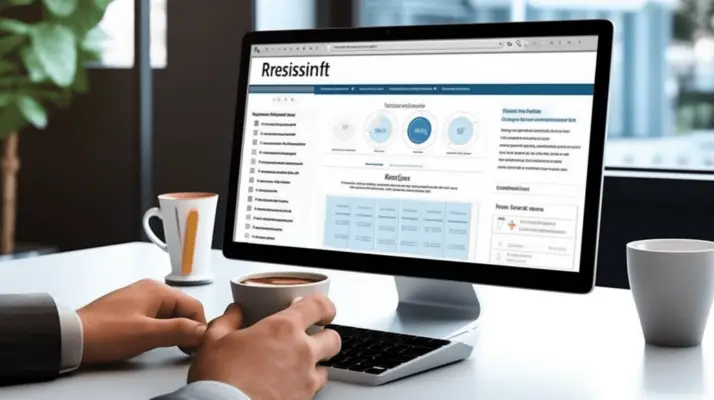One approach to risk identification is the application of qualitative data. Qualitative data consist of observations and interpretations as opposed to numbers.
Qualitative data is often used as the first stage of risk identification because it allows us to capture qualitative information on specific topics not otherwise apparent from quantitative data alone. This information can help identify risks missed on a company’s balance sheet or a country’s macroeconomic indicators.
Another approach to risk identification is examining probabilities and impacts on current and potential future states. Probabilities are measured by assigning values from likely to unlikely. Impacts consider both possible outcomes and their magnitude of effects, from high to low.
In this way, companies considering partnerships with new countries or new partners can balance the potential risks with the benefits of expansion.
In these two approaches, risk identification can be approached independently at both a high level and a low level, allowing for the title of the top-level risks to operations and those more detailed in their focus.
When used together, qualitative and quantitative data can provide a greater depth of analysis and a more thorough understanding of potential risks.

Risk Identification Tools and Techniques
Ways how to use techniques to identify risks:
-Organizations should develop their risk identification process, which is unique to their organizational culture. It will help make it less complicated for them to identify their risks.
-The management of an organization should have a proper balance between risk acceptance, mitigation, prevention, and insurance coverage. The cost-benefit analysis of each approach is analyzed. For example, you might want to invest in security guards to prevent theft instead of paying for insurance.
-The risk identification process may have different approaches depending on the level of assets managed by the organization.
For instance, an organization containing many assets may consider identifying risks at a higher level. In contrast, smaller organizations may need to identify them down to a micro-level.
Brainstorming
A group of people who focus on identifying risks for the project. Brainstorming is a group discussion that usually starts with a problem or idea. It is done in a large group setting, virtually or face-to-face, and they work together to define risks.
Software engineering teams often have brainstorming sessions before starting work on the project from a common understanding of the problem.
The process is usually done with a facilitator to keep the conversation on task and ensure everyone who wants to speak has their input heard. Individual brainstorming works best if each person writes down their ideas independently before sharing them with the group for discussion.
The advantages of brainstorming are that it gets everyone involved and thinking about the project collectively. The downside of brainstorming is that people may respond with silly or impractical ideas, and sometimes irrelevant suggestions can derail the process.
Before beginning a brainstorming session, it is essential to understand the purpose and scope of the meeting and create an agenda that specifies how long each part will take.
It’s also helpful to have two or more people lead the discussion so that multiple points of view are represented in the conversation.
Delphi Technique
A team of experts has consulted anonymously. A list of the required information is sent to experts, responses are compiled, and results are sent for further review.
The essence of this method is to obtain answers from people knowledgeable about a particular subject without their knowing other respondents or seeing other solutions. This way, the group provides their collective wisdom to the team.
How It Works
The process involves four steps:
1) Selection of experts,
2) Responses are compiled anonymously and analyzed using statistical procedures; if any arguments or differences arise, resolved at this step,
3) Once an agreement is made by all participants about the required criteria,
4) The final result is sent back to participants for their review.
This method does not depend on a particular individual’s judgment and opinion; it depends on the group’s collective wisdom. This method is beneficial when many unknown or poorly defined factors exist in solving a problem.
The disadvantage of the Delphi tool is that any specific operational procedure does not bind the developed approach. There is inconsistency in the decision-making process, making it difficult to reproduce results. To determine how likely consumers are to buy a new product and its viability on the market.
The Delphi technique collects data on consumer preferences to help determine which features are included in a new product.
The method has been applied to other fields, such as forecasting unit sales of movies and estimating public opinion about controversial topics, such as nuclear energy and genetic modification.
Interviewing
An interview is conducted with process owners, stakeholders, and experts to identify risks. This method is the most flexible and the least restrictive, allowing for free-form conversation. However, this method is also the most time-consuming.
Risk experts will interview process owners on the inherent risks prevalent on the unit, process, or organization level.
The advantages of interviewing method are that it is free-form, provides insight to process owners, which they can use to address risks at their levels, and allows for clarification on risks within the organization.
The disadvantage emanates from the interviewer’s ability to influence the interview outcome. Without a clear line of questioning, it is more difficult to identify risks.
Root Cause Analysis
Root causes are determined for the identified risks through root cause analysis (RCA). RCA is a methodology for understanding the underlying causal factors that led to an undesired effect, such as an IT security incident. RCA is also applied after accidents and incidents and is used in business process management.
It is effective when combined with other data-gathering techniques such as Failure Mode and Effects Analysis (FMEA), fault tree analysis (FTA), and Ishikawa diagram (Fishbone diagram or “Cause and Effect Diagram”).
This methodology aims to determine what needs to be fixed to reduce the risk of recurrence. It allows for understanding the systemic context in which the event occurred rather than the localized problem.
RCA focuses on finding and solving the root, rather than proximate, cause or causes of an event to prevent the recurrence of the undesired effect. It is a five-step process:
Root Cause Analysis is about asking the following questions: The objective of Root Cause Analysis is to identify and fix underlying systemic problems. It is not about attributing blame.
The intended audience of Root Cause Analysis is management, as they will be the ones to implement the necessary changes to prevent a recurrence.
The advantage of root cause analysis is that it allows for a complete understanding of the systemic problems behind an event. RCA is commonly used to prevent a recurrence.
However, it can also be applied retrospectively by forensic investigators attempting to understand the sequence of events during an incident. It has been shown that Root Cause Analysis can aid in identifying many types of causes, events, and risks.
The disadvantage of root cause analysis is that it takes a long time to perform and requires experienced specialists for its proper execution. In addition, Root Cause Analysis does not help determine who might have been responsible for the event.

Swot Analysis (STRENGTH, Weakness, Opportunities, And Threats)
Strengths and weaknesses are identified for the business, and thus, risks are determined. After identifying the opportunities, threats are evaluated.
Organizations should continuously find strength in themselves. They need to understand their business well enough to seek opportunities that they can utilize to increase profitability and market share. If they do that successfully, then there is less chance of suffering from any weaknesses or threats that might come their way.
When a business completes a SWOT analysis, it can help identify how the business is going and where it could improve, increasing the chance of success. A SWOT analysis combines internal and external factors to make a complete picture.
A SWOT analysis is beneficial because it helps determine the company’s strengths and weaknesses, enabling them to identify its opportunities and threats. It even provides ideas on how to go about the business and what to focus on.
For example, certain companies might use their strengths and exploit those further to help secure future success. By identifying these assets, a company can utilize them effectively.
In addition to strengths, the SWOT analysis also identifies the weaknesses of a business. A liability might be affecting revenue negatively or even something on the production line that will cause delays in meeting targets.
It could be anything from how customers are treated to their training on new services. Several weaknesses could be plaguing the company, and once they have been identified, they can be improved upon.
Opportunities are what organizations look for to exploit them to their advantage. They are something that might turn into success for the company if it is utilized correctly. If an opportunity is realized, It could be the chance for a business to make some noise in the market.
The purpose of the analysis is to determine what opportunities and threats surround the organization, which will help them to take control of their weaknesses and utilize their strengths.
It can then help them whether they are going through a low or high period within their industry’s cycle.
Advantages of a swot analysis, When a company can look at its strengths and weaknesses, opportunities and threats it faces, it will be better placed to take control of any problems that might arise.
Once weaknesses have been identified, they can be dealt with accordingly before they become too much of an issue.
Disadvantages of a swot analysis. Typically, SWOT is created using internal and external data. External factors include anything that comes from outside the business and can impact them somehow.
Interior characteristics, on the other hand, are more likely to be about staffing or production quality. Companies need to work on both together rather than just one area if they focus on improving specific areas of their business.
Checklist Analysis
The checklist of risk categories is used to come up with additional risks for the business process. Experts rate each risk according to its likelihood and impact in this approach.
Expert ratings are added to generate an overall risk score for each item. This score determines where the additional focus should be placed on mitigating risks or returning later in the project life cycle if necessary.
A checklist can be used to determine whether something should be done or if it has already been completed. Do not repeat that step if an item has already been marked as complete. It will save time and decrease the chance that something will be missed.
The advantage of checklist analysis is that it increases accuracy. Because multiple experts rate each category, the risk analysis should be more accurate than if only one person did the study.
Another advantage is that this approach can be completed relatively quickly. Finally, it focuses on documenting risks rather than exploring them in depth. It could help prevent someone from overlooking key factors such as internal or external threats with a high impact.
The disadvantage is that it takes a long time to receive the ratings from each expert. In addition, not every organization may have enough experts to provide comprehensive risk analysis.
This method also doesn’t prioritize risks when the list is completed, which could be an issue if there is limited time to fix the risks.
Assumption Analysis
Identifying different assumptions of the project and determining their validity further helps identify risks for the business.
The first step is to identify assumptions that are being made. These may vary depending on the nature of the particular strategy, but certain assumptions are applicable across all business strategies.
1) Market Assumptions
2) Financial Assumptions
3) Validity Underlying Key Metrics
4) Management Team Capabilities
To identify the market assumptions, consider the market broadly, not just the industry where you operate. Identify what is expected of it (demand, supply). Also, identify your competition and how it will affect the demand for your product or service.
Identify the financial assumptions and their impact on your business. Assume a worst-case scenario to identify any holes in the plan. For example, increase interest rates by 0.5%, decrease demand by 2%, and implement a price hike of 3%. Calculate cash flows, including internal sources (operating cash flows) and external sources (sales and distribution of assets)
Identify the underlying vital metrics and the factors that will influence them. In launching a new product, sales volume is your key metric. Marketing activities such as advertisements and sales pitches directly affect this key metric, while several distributors affect it indirectly.
Therefore, for existing products or services with little scope for innovation, key metrics are the performance metrics that will directly affect your bottom line. Identify these and what factors influence them.
Identify management capabilities necessary to implement the strategy, including financial controls, operational controls, or marketing skills. For example, manufacturing expertise is critical if you plan to launch a new product release.
Advantage of assumption analysis It helps management see if the current strategy will help them meet their long-term goals. It also helps identify business risks that can be mitigated before they become significant problems.
The disadvantage of assumption analysis is that business managers are often too close to the issues and may not assess all possible assumptions. If incorrect assumptions are made at the beginning of a strategy, it is hard to go back and fix them.

Conclusion
Risk identification is a critical component of risk management. It’s essential to understand the approaches and tools for identifying risks and how to mitigate them to protect your company from future disasters.
In this blog post, we’ve outlined ways to identify potential problems before they happen. Look over these tips and let us know if there’s anything else you would like help with your risk identification exercise.
Chris Ekai is a Risk Management expert with over 10 years of experience in the field. He has a Master’s degree in Risk Management from University of Portsmouth and is a CPA and Finance professional. He currently works as a Content Manager at Risk Publishing, writing about Enterprise Risk Management, Business Continuity Management and Project Management.

